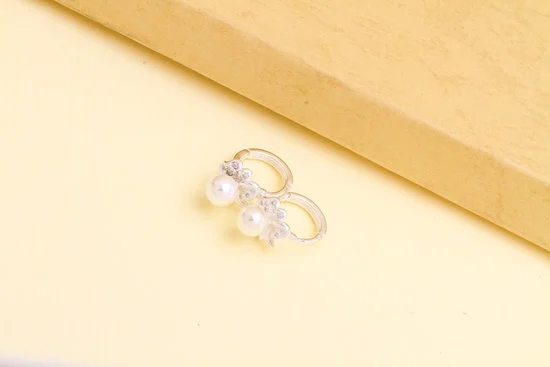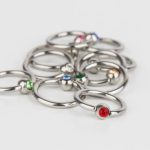African bead jewelry has a long-standing tradition deeply rooted in the continent’s rich history and cultural significance. From intricate beaded necklaces to colorful bracelets, these pieces not only serve as adornments but also carry profound meanings and symbolism behind their designs. Beadmaking in Africa showcases traditional techniques passed down through generations, using a wide array of materials to create stunning works of art.
The art of beadmaking in Africa is a reflection of the diverse cultures and heritage found on the continent. Each piece of African bead jewelry tells a story, representing different tribes, regions, and traditions. The intricate designs and vibrant colors used in these pieces are a testament to the creativity and craftsmanship of African artisans who masterfully craft each unique creation by hand.
Exploring the world of African bead jewelry opens up a treasure trove of designs that vary from region to region, showcasing a plethora of styles that cater to individual preferences. Whether you are drawn to elaborate patterns or simple yet elegant pieces, there is something for everyone in the fascinating world of African bead jewelry.
Join us on a journey to discover the beauty and cultural depth of these timeless creations while learning how you can support local artisans and businesses when purchasing authentic African bead jewelry.
The Art of Beadmaking
One of the most iconic materials used in African bead jewelry is glass beads. These beads are often made by hand using recycled materials such as old bottles or broken glass pieces. The process involves heating the glass until it becomes malleable, then shaping it into different forms and sizes before allowing it to cool and harden. The result is a stunning array of colorful glass beads that are used to create intricate patterns and designs in African bead jewelry.
Another traditional technique used in creating African bead jewelry is threading and weaving. In many African cultures, beads are meticulously threaded onto strings or wires to create elaborate necklaces, bracelets, and other accessories. The skill required to thread tiny beads into complex patterns is highly revered, with some artisans spending years perfecting their craft. Additionally, weaving techniques such as loom beading are also common in creating larger pieces of beadwork, showcasing the versatility and creativity of African beadmakers.
| Traditional Techniques | Materials Used |
|---|---|
| Glass Bead Making | Recycled Glass |
| Threading and Weaving | Strings or Wires |
Different Styles of African Bead Jewelry
African bead jewelry is known for its vibrant colors, intricate designs, and rich cultural significance. From delicate beaded necklaces to bold and colorful bracelets, there is a wide variety of styles available in African bead jewelry. Each piece tells a unique story and reflects the heritage and traditions of the artisan who created it.
One popular style of African bead jewelry is the Maasai beadwork from East Africa. The Maasai people are known for their intricate beadwork, often using bright reds, blues, and greens in their designs. Maasai bead necklaces are typically long and draped around the neck multiple times, creating a striking effect. These pieces not only serve as decorative accessories but also hold symbolic meaning within the Maasai culture.
In West Africa, Fulani earrings are another iconic style of African bead jewelry. These large hoop earrings are crafted using colorful beads arranged in geometric patterns. The Fulani people have been creating these distinctive earrings for generations, with each pair representing a blend of tradition and contemporary style. Wearing Fulani earrings is not only a fashion statement but also a way to honor the craftsmanship and artistry of the Fulani artisans.
| African Bead Jewelry Style | Cultural Significance |
|---|---|
| Maasai Beadwork | Intricate designs using bright colors |
| Fulani Earrings | Large hoop earrings with geometric patterns |
Symbolism in African Bead Jewelry
African bead jewelry holds deep cultural significance and often carries hidden meanings through its intricate designs and vibrant colors. The symbolism behind different bead patterns and colors varies across African cultures, serving as a reflection of traditions, spirituality, and social status. Understanding the symbolism in African bead jewelry adds an extra layer of appreciation for these beautiful creations.
Here are some common meanings associated with bead patterns and colors in African jewelry:
- White beads: symbolize purity, spirituality, and light
- Blue beads: represent peace, truth, and harmony
- Red beads: signify strength, vitality, and power
- Green beads: associated with growth, fertility, and nature
In addition to colors, the patterns of African bead jewelry also hold significant meaning. Geometric shapes may represent concepts like unity or interconnectedness within a community, while animal motifs could symbolize qualities such as wisdom or courage. By delving into the symbolism of African bead jewelry, wearers can connect more deeply with the culture and heritage embodied in these pieces.
Exploring Symbolism in Different African Regions
In different regions of Africa, specific symbols and motifs may carry unique meanings. For example:
- The Adinkra symbols from Ghana often convey proverbs or philosophical ideas
- The Zulu beaded jewelry from South Africa incorporates traditional designs that reflect familial relationships or spiritual beliefs
- The Maasai beadwork from Kenya features bold colors and intricate patterns that signify status within the community
By understanding the symbolism behind African bead jewelry from various regions, collectors can appreciate the diversity and depth of this art form. Whether worn for special occasions or everyday adornment, each piece of African bead jewelry tells a story rich in cultural heritage and tradition.
Popular African Bead Jewelry Designs
African bead jewelry is known for its vibrant colors, intricate patterns, and cultural significance. Each piece of African bead jewelry tells a story and carries with it the rich history of the continent. From ancient times to modern fashion trends, African bead jewelry has captivated people around the world with its unique beauty and craftsmanship.
Krobo Beads From Ghana
One of the most popular and iconic African bead jewelry designs comes from Ghana, specifically the Krobo beads. These beads are handmade by the Krobo people using recycled glass. The beads are made by crushing glass into a fine powder, which is then poured into clay molds and baked in a kiln to create colorful and beautifully patterned beads. Krobo beads are often used in necklaces, bracelets, and earrings, adding a pop of color and cultural flair to any outfit.
Masai Beaded Jewelry From Kenya
Another well-known design of African bead jewelry comes from the Masai tribe in Kenya. The Masai people are famous for their intricate beaded jewelry, especially their beaded necklaces and bracelets. These pieces are made using tiny glass seed beads in vibrant colors, meticulously woven together to create stunning geometric patterns. Masai beadwork is not only beautiful but also holds symbolic meanings related to tribal identity, social status, and cultural traditions.
Zulu Love Letters From South Africa
In South Africa, Zulu beadwork holds a special place in African culture. Zulu love letters, also known as love messages or “Umpetha,” are intricate beadwork messages crafted by Zulu women to express love or convey messages of peace between individuals or tribes.
These messages are created using various colored beads arranged in specific patterns that hold hidden meanings understood within the Zulu community. Zulu love letters have become popular as accessories like beaded bangles or belts but still carry deep cultural significance within South Africa’s Zulu heritage.
From Ghana’s Krobo beads to Kenya’s Masai beaded jewelry and South Africa’s Zulu love letters, each region in Africa has its unique styles and designs when it comes to beadwork. These popular African bead jewelry designs not only showcase exceptional craftsmanship but also embody the rich cultural heritage of each respective region.
When you wear African bead jewelry, you not only adorn yourself with stunning pieces but also carry a piece of African history and tradition with you wherever you go.
Shopping for Authentic African Bead Jewelry
When shopping for authentic African bead jewelry, it is important to ensure that you are purchasing genuine pieces that reflect the rich cultural heritage and craftsmanship of African artisans. Here are some tips on how to identify and purchase authentic African bead jewelry, whether online or in-store:
- Research the Seller: Before making a purchase, research the credibility and reputation of the seller or retailer. Look for reviews, testimonials, and feedback from previous customers to ensure that you are buying from a reputable source.
- Materials Used: Authentic African bead jewelry is often crafted using traditional materials such as glass beads, semi-precious stones, shells, and metals like brass or copper. Be wary of cheap imitations made with plastic beads or synthetic materials.
- Handmade vs Mass-Produced: True African bead jewelry is typically handmade by skilled artisans using traditional techniques passed down through generations. Look for signs of handiwork such as slight irregularities in size or pattern, which add to the authenticity and charm of the piece.
It is also important to consider the cultural significance and symbolism behind the bead patterns and colors used in African jewelry. Many traditional designs hold specific meanings related to spirituality, social status, or life events. By understanding these symbols, you can appreciate the deeper meaning behind each piece of African bead jewelry.
When shopping for African bead jewelry online, make sure to read product descriptions carefully, examine photos closely for detail, and inquire about the origin and craftsmanship of the piece. If possible, support local artisans by purchasing directly from an African bead jewelry shop or artisan cooperative that specializes in authentic handmade pieces. By investing in genuine African bead jewelry, you not only acquire a unique and beautiful accessory but also contribute to preserving Africa’s rich artistic traditions.
Maintaining African Bead Jewelry
African bead jewelry is not just a beautiful accessory; it also holds deep cultural and historical significance. To ensure that your African bead jewelry pieces retain their beauty and quality for years to come, proper care and maintenance are essential. Whether you have purchased a beaded necklace, bracelet, or pair of earrings from an African bead jewelry shop, following these care instructions will help preserve the unique craftsmanship of these pieces.
Handling and Storage
When handling your African bead jewelry, it is important to remember that the beads are delicate and can break easily if mishandled. To avoid any damage, always handle the jewelry with care and refrain from pulling or tugging on the beads. When storing your African bead jewelry pieces, keep them separately in soft pouches or fabric-lined compartments to prevent tangling or scratching.
Cleaning Your African Bead Jewelry
To maintain the luster of your African bead jewelry, clean them regularly with a soft, lint-free cloth. Avoid using harsh chemicals or cleaners that can tarnish or damage the beads. For stubborn dirt or grime, you can gently wipe the beads with a damp cloth and mild soap solution. Make sure to dry the jewelry thoroughly before storing it away.
Avoiding Exposure
Sunlight, moisture, and harsh chemicals can all contribute to the deterioration of African bead jewelry. It is essential to protect your pieces from direct sunlight and extreme temperatures as this can cause the colors of the beads to fade over time.
Additionally, avoid wearing your beaded jewelry when swimming or showering as exposure to water can weaken the threads holding the beads together. By taking these precautions, you can enjoy your African bead jewelry for many years while maintaining its vibrant colors and intricate designs.
Remember that by properly caring for and maintaining your African bead jewelry pieces, you are honoring not only their craftsmanship but also supporting local artisans who continue to preserve this rich tradition. Whether you have purchased a beaded necklace inspired by Maasai culture or intricate bracelets from Ghanaian artisans, keeping these care tips in mind will help extend the life of your treasured pieces.
Supporting African Artisans
When you choose to buy from an authentic African bead jewelry shop, you are not just acquiring a beautiful piece of jewelry; you are contributing to the livelihoods of talented artisans who have dedicated their lives to their craft. These artisans often use locally-sourced materials and traditional techniques, ensuring that each piece is infused with authenticity and cultural significance.
By investing in these creations, you are playing a vital role in preserving traditions and supporting artists who take pride in their work.
In today’s global market, it is essential to be mindful of where you purchase your African bead jewelry from. Buying directly from local artisans or reputable stores ensures that your money goes back into the community where the jewelry was made.
This direct support helps sustain artisanal skills, promotes economic growth, and fosters cultural exchange. So next time you’re in search of a unique piece of African bead jewelry, remember the importance of supporting African artisans and celebrate the beauty of handmade craftsmanship.
Frequently Asked Questions
Which Tribe in Africa Is Famous for Their Beaded Jewellery?
The Maasai tribe in Africa is famous for their beaded jewelry. The intricate designs and vibrant colors of Maasai beadwork are not only beautiful but also culturally significant, often representing aspects of their way of life.
What Do African Beads Symbolize?
African beads hold symbolic meanings that vary among different tribes and cultures. Generally, African beads are used to convey wealth, social status, cultural heritage, spirituality, and protection. They can also represent important life events like marriage, birth, or coming of age rituals.
What Are African Necklaces Called?
African necklaces go by different names depending on the region or tribe they come from. For example, the Zulu people of South Africa call their beaded necklaces “iziqhaza,” while the Fulani people of West Africa refer to theirs as “tasbih.” These necklaces are not just accessories but carry deep cultural significance and meaning within African communities.

Welcome to my jewelry blog! My name is Sarah and I am the owner of this blog.
I love making jewelry and sharing my creations with others.
So whether you’re someone who loves wearing jewelry yourself or simply enjoys learning about it, be sure to check out my blog for insightful posts on everything related to this exciting topic!





